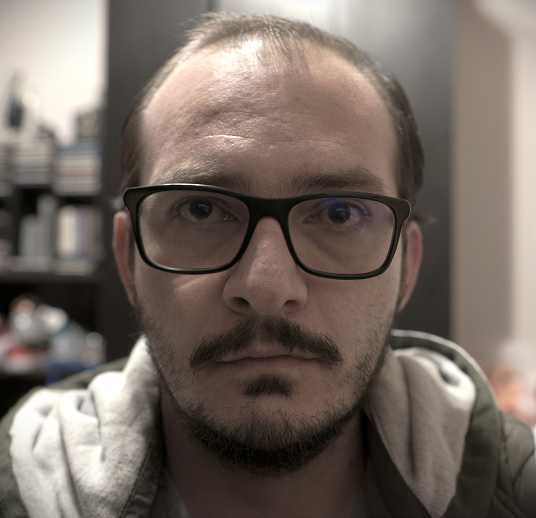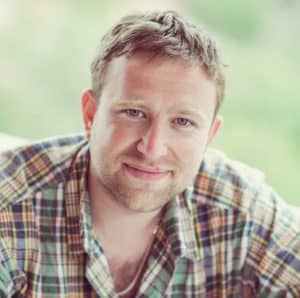A small, isolated house in the mountains, and someone held inside against her will. It’s a very somber thought, and its vivid portrayal, in the excellent film by Kenneth Sanabria, drives up the gloomy factor by a considerable margin. We liked the end result so much, that we awarded ‘Blood and Ash‘ our January ‘Film of the Month’ distinction here at TMFF, and we also had a chat with the film’s director.
JL: Congratulations, Kenneth, for a truly masterful work! How was ‘Blood and Ash’ received, in general, for now?
KS: Thank you. The film has not premiered yet, so I’m not sure about how the audience would respond to this story. For me, it is a great film, the best film I have made until now. It is starting its festival run, and recently I received an invitation from a Class A film festival, so good news is coming for the next few weeks.
JL: What was the main idea or source of inspiration behind the movie’s plot?
KS: Some years ago, I met a man who told me a deep and dark secret: when he was a teenager, he and his mother killed his own father because of the aggression they had been receiving from him for many years. That was the beginning of the idea that I developed in the story. As a psychiatrist, I have been attending to many women suffering from domestic violence here in my country, Costa Rica, where religion, especially Catholicism, has a direct influence on families. I have seen how women suffering aggression from their husbands feel isolated and locked up in their own homes. Usually, I find a religious conviction, some kind of Christian model of a family that gives a woman the idea that she must obey her husband and keep her family together at all costs. ‘Blood and Ash’ is about breaking a traditional and religious family mold and showing a new version of the “holy family” that many want to ignore but is present in our society today.
JL: And which would you say were some of your influences in terms of the visual style you chose?
KS: The visual style was inspired by Renaissance painting, especially the work of Da Vinci: The Holy Family with Saint Anne. I wanted the film to look like a vivid painting, with texture, chiaroscuro, and grain. My cinematographer, Roberto Murillo; the colorist, Jose Arce; and the art director, Raquel Rivera, did a great job with that idea in mind. The look of the film owes more to their job than mine.
JL: One aspect that immediately stands out is the claustrophobic setting, and the extremely oppressive atmosphere – and they are presented on the backdrop of relative calm and mundane actions, at first. How difficult was it to get all these atmospheric anchors working together?
KS: There are some characteristics of families that live in captivity and oppression for years. One of them is that day-to-day actions try to resume their course despite an increasingly deteriorating state of mind. In the film, we see how the protagonist tries to keep her role as a wife and mother, but she fails in her attempt. Sound is extremely important in the tense and oppressive atmosphere. In a film that lacks dialogue, the sounds do the talking. The production sound mixer, Natalia Guzmán, did a great job in terms of recording the necessary sounds to fulfill that task. And well, afterward, the sound designer Fernando Cabrera and his team arrived and did an incredible job. In the end, the sound is what allows us to “see” that there is no calmness inside this woman’s mind, even though she seems to be calm doing her daily routine.
JL: The other definite particularity of your film is the absence of dialogue. This allows the visuals to not only tell stories, but expand upon them. How did you arrive at this stylistic decision, and how does it influence your film?
KS: In human relationships, many times silence is a sign of obedience. In a family under the tyrannical rule of one man, the absence of voices is a sign of psychological aggression. Whether the family can’t talk, they’ll have to find another way to communicate between them, like actions, whispers, and looks. It is the direction of the characters’ gazes that communicate the most. In addition, the absence of dialogue allows the symbol of the painting hanging on the wall to take on more relevance, as well as other symbols like the fireplace, the candles, the smoke, and, of course, the sounds.
JL: Similarly, how does setting a film within a limited physical space enhance the potential of other manners of storytelling, or building a cohesive visual style?
KS: Working with a limited physical space, in the case of this film, helped me to show the loneliness of the protagonist, giving the feeling that this small house in the mountain is the whole world for her, thus increasing the oppressive feeling and psychological confinement of the character. Also, it’s a challenge because I must find the way to show a progression in the story, even though we don’t leave the same space in the entire film, that’s why each of the elements of the space are used to create a relationship with the characters. In this limited physical space, we see characters interacting with a painting hanging on the wall, a fireplace, a window, plates, chairs, a bag, a rope, etc. A series of inanimate objects taking an important role that we would not see in a movie with many scenarios.
JL: You also wrote the screenplay, and won our ‘Screenplay of the Month’ award, well done! How closely does the script match the end result, and was there a lot of improvisation along the way?
KS: The film was very faithful to the script I wrote. As a director I didn’t leave much room for improvisation, every character and camera movement were planned and discussed with the crew and cast before shooting. I worked with the actors for about a month with rehearsals like those that would be done for a play, in fact, the short was rehearsed with the actors as if it were a play, and that play was shown to the camera, sound and art departments days before shooting. The pandemic hit us, and we couldn’t shoot it until 2 years after rehearsing. When we resumed pre-production, we held virtual meetings to remember the instructions I had given them two years ago.
JL: Do you have any projects that you are currently working on?
KS: I am currently working on my first feature film project: ‘Blood and Ash’, which is the complete story of the characters you watched in this short film. The screenplay was a finalist in The Monthly Film Festival Screenplay Competition a few months ago. This project has been selected in some labs such as Stowe Story Labs Sidewalk Narrative Lab, LabGuion of Cinefilia Colombia, and the Talents’ Script Studio of the Guadalajara International Film Festival. Currently, I am working on preproduction and looking for co-producers and financiers.
JL: Thanks for your insights, Kenneth, it has been a pleasure. Looking forward to watching more of your work in the future!
KS: Thank you for awarding me in your festival and giving me this opportunity to share my thoughts about the film.
















